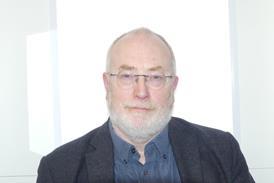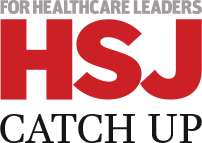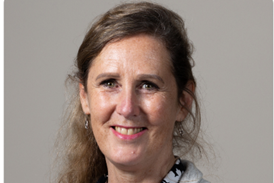The mandatory responsibilities of trusts to report on and improve performance on surgical site infections are not robust enough to match the speed of patient care today, according to those dealing with the issue on the front line.
Surgical site infections are a key battleground in the fight to maintain and sustain good quality, safe care. Martin Kiernan, nurse consultant for prevention and control of infection, Southport and Ormskirk Trust and past president of the Infection Prevention Society, emphasises that in fact, information on the size of the problem with SSIs “is very poor”.
Mr Kiernan continues: “Most organisations don’t know what their infection rates are with any great degree of accuracy: they undertake mandatory surveillance of SSIs for (in England) a minimum of one quarter of each year for a couple of defined orthopaedic procedures. That is all they have to do, and many don’t elect to do anything beyond that”.
How does he perceive the culture of reporting healthcare-associated infections in the NHS? “I think it’s improving, and we’re getting more inquisitive about infections in UK.
“However, most other countries are mandated to do more surveillance than England: Scotland, Wales and Northern Ireland all have to monitor Caesarean section infection rates. In the NHS in England, it’s still not mandated, although the DH advisory committee on infection control is currently following a pilot scheme, results are still awaited.
“Overall, the NHS in England remains behind the Celtic nations in the amount of surveillance undertaken and mandated”.
An issue that should interest commissioners, “I would want to know not just that providers had effective outcomes but what complications followed from their surgery,” says Mr Kiernan.
SSI is not only an issue requiring awareness in the acute sector. “It’s an issue for all sectors,” says Mr Kiernan. “Now acute turnaround times are very quick, increasingly problems will not all appear while a patient is still in hospital. Go back seven or eight years, hip replacement had a 10-day length of stay; the average time for a SSI to show peaks at nine days. Now we turn around hip and knee replacements in five days, so an SSI is probably not apparent until post-discharge.
“Until three years ago, mandatory surveillance in the NHS in England only included inpatients, so we had an artificially low rate. This has now been extended to include readmission due to infection, however this will still mean that only the most serious infections will be detected. A large number of SSI are still treated by GPs, or as outpatients - so we still do not know the scale of the problem. Each time we increase surveillance, we know more; but not the whole picture”.
Mr Kiernan cites a key study published in the Journal of Hospital Infection by Professor Judith Tanner of DeMontfort University which followed up colorectal surgery patients over a three-month period.
By telephoning them at home and following up with a review by a research nurse, the study found the infection rate to be 27 per cent. The study then costed those SSIs, finding the total cost incurred by the NHS was over £300,000; an average of £10,500 per patient for just one specific form of surgery for one quarter.
The study also noted that although acute care bore about 85 per cent of the cost, primary care still picked up the other 15 per cent, mainly in district nurses’ time. “It affects all parts of the health economy, and as we see more fast turnarounds and more surgery in non-acute settings, the potential is there for more problems”.
What does Mr Kiernan see as the likely impact for the 30-day readmission policy as regards SSIs? He suggests that there is “clearly potential to affect acute income, but we still don’t know quite how the health secretary’s proposals pan out. But a clinical commissioner should certainly be interested. Hip and knee replacements are very expensive to redo, and a properly-monitored provider might bear quite a cost if they have a significant infection rate, so I think there’s quite some potential.
“I’d hope acute providers would monitor their own readmission rates for SSI already, which would let them see their potential liability. Readmissions happen for various reasons within 28 days, but if it’s an SSI, it’s potentially avoidable”.
Although hip and knee operations have the lowest infection rate for SSIs, at around 1 per cent, the consequences are quite disastrous if an infection occurs within a joint.
When infection takes hold in the presence of any surgical implant it will form a biofilm, which becomes extremely challenging to treat with antibiotics, so frequently major surgery involving removal of all of the material implanted; an extended course of intravenous antibiotics; and therefore an extended hospital stay are required.
That, Mr Kiernan says, is why a focus on orthopaedic surgery is key, as the impact of SSIs will generally be most serious – but the same is true for any implant surgery as it will be leaving something behind in the body: “as Professor Tanner showed, colorectal surgery has a high infection rate - even in non-implant surgery, there’s still a significant burden”.
Will clinical commissioners act?
Clinical commissioners will be in charge of budgets for much of elective care. “I personally think and hope that commissioners will take more interest in actual quality; not just provision,” says Mr Kiernan. “They should have idea how robust clinical pathways are, and take an interest not just as a traditional commissioner buying a certain number at a certain price, but seeing the work done to the best standard possible, monitoring providers to see that is achieved.
“But I hope they’ll ensure pathways and service designs are safe, robust and effective, and conform with best possible clinical practice”.
Mr Kiernan suggests that so much effort (justifiably) has been made on MRSA and C difficile, that as a result SSIs have been put somewhat onto the ‘back burner’: “most infection prevention and control teams wanted to look at other infections, but have had to focus on MRSA and C difficile because numbers were so high”.
Many infection control teams now support wider surveillance, and look at central line-associated bloodsteam infections. Mr Kiernan recalls the ‘Michigan Project’ – which was time-limited, but kick-started surveillance in Critical Care Units in England.
In 2001, the National Audit Office asked infection control teams how many infections they believed were preventable: the answer across the country was on average 20 per cent. That means even the most optimistic thought 80 per cent of HCAIs weren’t preventable.
Mr Kiernan suggests that “because infections for MRSA and C diff have reduced to levels not thought possible (and are still reducing), people are now more confident they can make a big difference.
“Targets concentrated minds and made people review their clinical practice, and now we don’t hear ‘our patients are a special case because they’re sicker / older’; instead we hear ‘if we focus on this, we can start to make a difference’. It’s the ‘confidence=success’ spiral.”
As the NHS grapples with needing to make efficiencies to a value of £4 billion in each of the next four financial years while maintaining quality, how would an argument to use technology to prevent SSIs be framed? Is there clear cost-effectiveness data?
Unfortunately, Mr Kiernan thinks the answer is no, “and the other problem is that we can’t show as well that we’re being cost-effective as we can demonstrate lowering infection rates.
“The two should go hand-in-hand. But the economics of this has been poorly studied, and we still go back to the Plowman study 10-12 years ago. That’s why the Tanner study is so useful, as it has up-to-date costing data.
More work is, he adds “definitely needed on cost-effectiveness of surgical site infection control. The DH Advisory Committee on Antimicrobial Resistance and Healthcare Associated Infections has recently been joined by a heath economist and that is a valuable addition to the robustness of the advice that the Committee can offer. We can show reduced infection rates through good practice in surgical site hygiene, but people who are in charge of the they money will rightly say, ‘so what does that do to the budget?’ We have to be able to make a more robust business case and justify changes in clinical practice”.
Does Mr Kiernan think infection control issues are at risk as the reductions in NHS tariff prices increase financial pressure on providers? “There’s a potential that people look to make economies and undertake value engineering on processes,” he says.
“It’ll be up to clinicians to be able to argue their case, and sometimes accept that the status quo or a cheaper product can be safe, and sometimes say ‘but there’s robust evidence that certain interventions are effective and these should be part of an evidence-based bundle of care.
“Examples of this would be the DH Saving Lives High Impact Intervention for surgical care which recommends the use of patient warming systems during surgery to keep the patient warm or 2 per cent alcoholic chlorhexidine for skin preparation prior to surgery”.
Commissioner and provider perspectives
One of the best-known health economies in England for integration of care is the Torbay Care Trust area. SSIs are an important part of the local picture for both commissioner and provider.
Gillian Gant, assistant director, patient safety and quality for the Southern Locality of the Devon Cluster of PCTs, Torbay Care Trust, explains that “the issue of SSIs has been discussed between commissioners and providers in Torbay on several occasions although it is not currently a high priority for our local health community in that we have not identified a particular risk issue locally.
“Our antibiotic prescribing is very good locally; as are the infection prevention and control programmes, and the major programme for theatres under the Safer Patient Initiative in the acute trust does seem to have paid dividends in the containing of post surgical infection.
“Current lengths of stay in the acute trust are very short and thus the surveillance of SSIs within the trust is not easily done. We have not noticed a high rate of re-admissions post surgery due to infection”.
Debbie Lannon, communications officer of South Devon Foundation Trust, concurs: “We work closely on integration between the acute trust and the community, allowing us to develop helpful infection control and prevention strategies, which follow the patient from referral through to diagnostics and treatment – including surgery - in acute setting, back out into the community.
“As a result of working in this way, we have seen a significant reduction in C Diff and MRSA bacteraemia. Using our integrated approach to communications, we work to provide patients and the general public with information and advice to reduce the number of community acquired infections being brought into a healthcare setting”.



























No comments yet